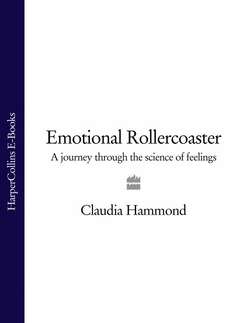Читать книгу Emotional Rollercoaster: A Journey Through the Science of Feelings - Claudia Hammond - Страница 13
the laughter epidemic
ОглавлениеIn 1962 a very strange thing happened in the village of Kashasha near Lake Victoria in what is now Tanzania. At a small Catholic girls’ boarding school there were 159 pupils. On 30th January three girls began laughing for hours at a time, then crying and then laughing again. Two weeks later they were still laughing. By the middle of March so many pupils were laughing that the school was temporarily closed down. No one knew the reason for the laughter or the tears, but it seemed to be contagious. After the school was closed the girls went to other schools and the epidemic seemed to spread. Soon boys were laughing too. In the village of Nshamba the hysteria spread to more than 200 inhabitants and even to young adults. Soon two boys’ schools had to be closed down for the same reason. Blood tests were taken to test for food poisoning, but everything appeared normal. Six months later people were still giggling – it was a laughter epidemic. The outbreak is often described in works on laughter, usually as a joyful occasion. But it seems it was no laughing matter. Christian Hempelmann from Purdue University in the United States believes that in fact the girls may have been suffering from a mass psychogenic illness of which laughter was one of the symptoms. He believes the condition was caused by the transition occurring in the country at the time. Independence had been achieved in December 1961 and schools were growing with the aim of providing free education for as many children as possible. Hempelmann believes the hysteria might have been a response to the stress of suddenly going to Western-style schools; far from enjoying themselves the pupils were suffering.
Although the researchers who first published details of the case in The Central African Journal of Medicine in 1963 themselves suggested that mass hysteria could be the explanation, it’s intriguing that a humorous explanation has been sought ever since, with writers wondering what the original joke could have been, a joke so good that it apparently made people laugh for months. We seem to have a desire to make sense of our emotions, particularly when they are as intense as uncontrollable laughter. The need to look for explanations was illustrated by the case of a sixteen-year-old girl who was examined in 1998 as part of an investigation into her epileptic seizures. When the doctors applied an electric current to a certain part of her brain she burst out laughing, even when distracted by other activities. It was intriguing that each time she looked for a justification for her laughter, saying how funny the doctors were or that the picture of the horse they had shown her was hilarious. Although joy can be free-floating, when we observe that joy in ourselves we are inclined to look for meaning. Instead of searching for an explanation for individual instances of happiness, perhaps the crucial question is why we have evolved to experience this feeling at all.
